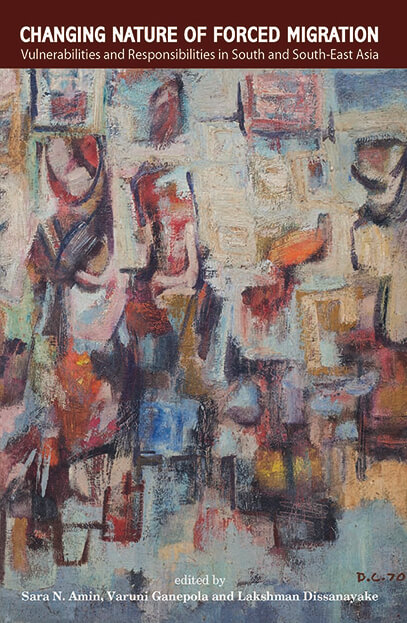
- Shop
- Changing Nature of Forced Migration: Vulnerabilities and Responsibilities in South and South-East Asia
Changing Nature of Forced Migration: Vulnerabilities and Responsibilities in South and South-East Asia
https://uplbooks.com/shop/9789845062367-changing-nature-of-forced-migration-vulnerabilities-and-responsibilities-in-south-and-south-east-asia-8366 https://uplbooks.com/web/image/product.template/8366/image_1920?unique=3d813f3
| Language: English |
Tags :
Book Info
Protracted conflicts, unequal burden sharing, climate change, globalization, and shifting policies regarding immigration, asylum, work and development are changing the nature of forced displacements and blurring the line between forced migration and economic migration. This book looks at migration dynamics of South and Southeast Asia examining these shifts to contribute to a more interdisciplinary and comprehensive picture of migration for both research and policy-making. We highlight research about migration patterns of groups that are often invisible in the study of migration—women, IPDs, environmental refugees and migrants, South-South migrants, and those that stay behind. Questions addressed in this book include: •How do the causes and consequences of the vulnerabilities of refugees, internally displaced persons (IDPs), trafficked peoples and migrant workers intersect and diverge? •How do these groups respond to and manage the challenges that their vulnerabilities pose? •What do the commonalities and specificities imply for how responsibilities should be distributed among nation-states, the international community, and regional and local actors? •How are these processes mediated by gender and other identity dimensions implicated in movement of people?

Dr. Varuni Ganepola
Dr. Varuni Ganepola is an Associate Professor of Psychology at the Asian University for Women. Her research interests include conflict and coping with displacement and refugeehood; distress, vulnerability, and resilience; and understanding lives of former child soldiers. Recently, she has undertaken research on domestic violence, suicide and Muslim women’s empowerment. She also does sessional teaching at Monash University (Australia).

Dr. Lakshman Dissanayake
Dr. Lakshman Dissanayake is a Professor in the Department of Demography, University of Colombo. He was the former Dean of the Faculty of Graduate Studies and founder Director of the Colombo University Community Extension Centre. His expertise includes regional demography, regional development planning, health demography and post-disaster reconstruction.

Dr. Sara N. Amin
Dr. Sara N. Amin is a Lecturer in Sociology at the University of the South Pacific. Previously she was at the Asian University for Women and a Fulbright Scholar to Georgetown University. Her research has focused on migration, identity politics, gender, and the politics of education.


